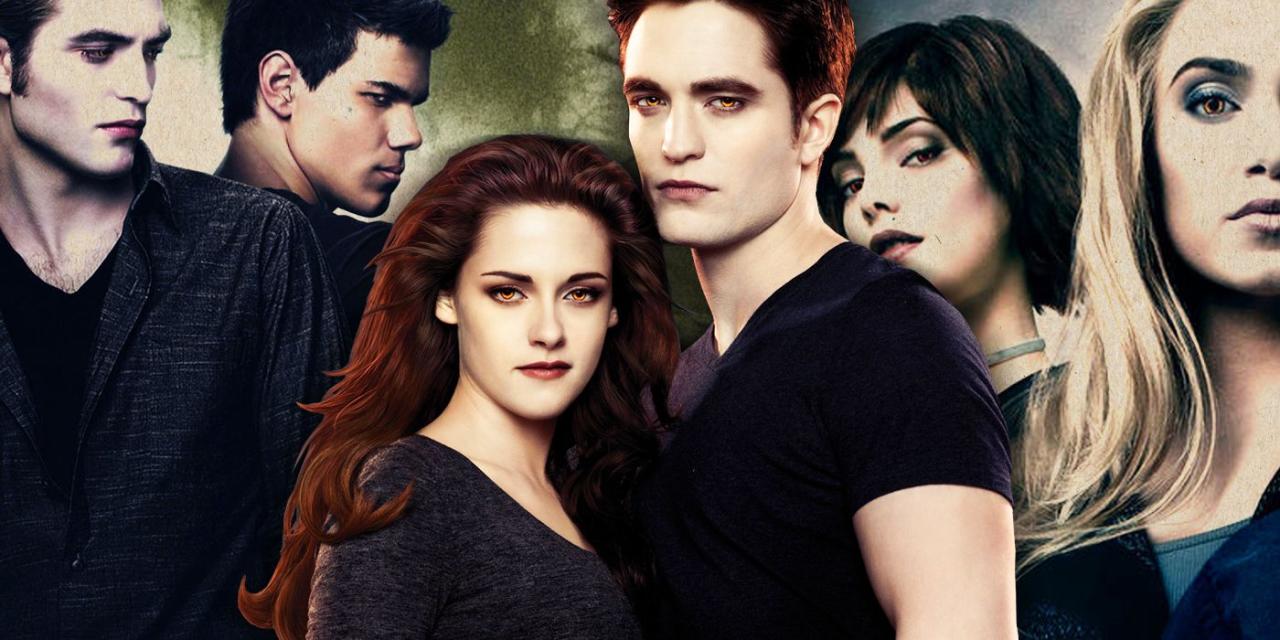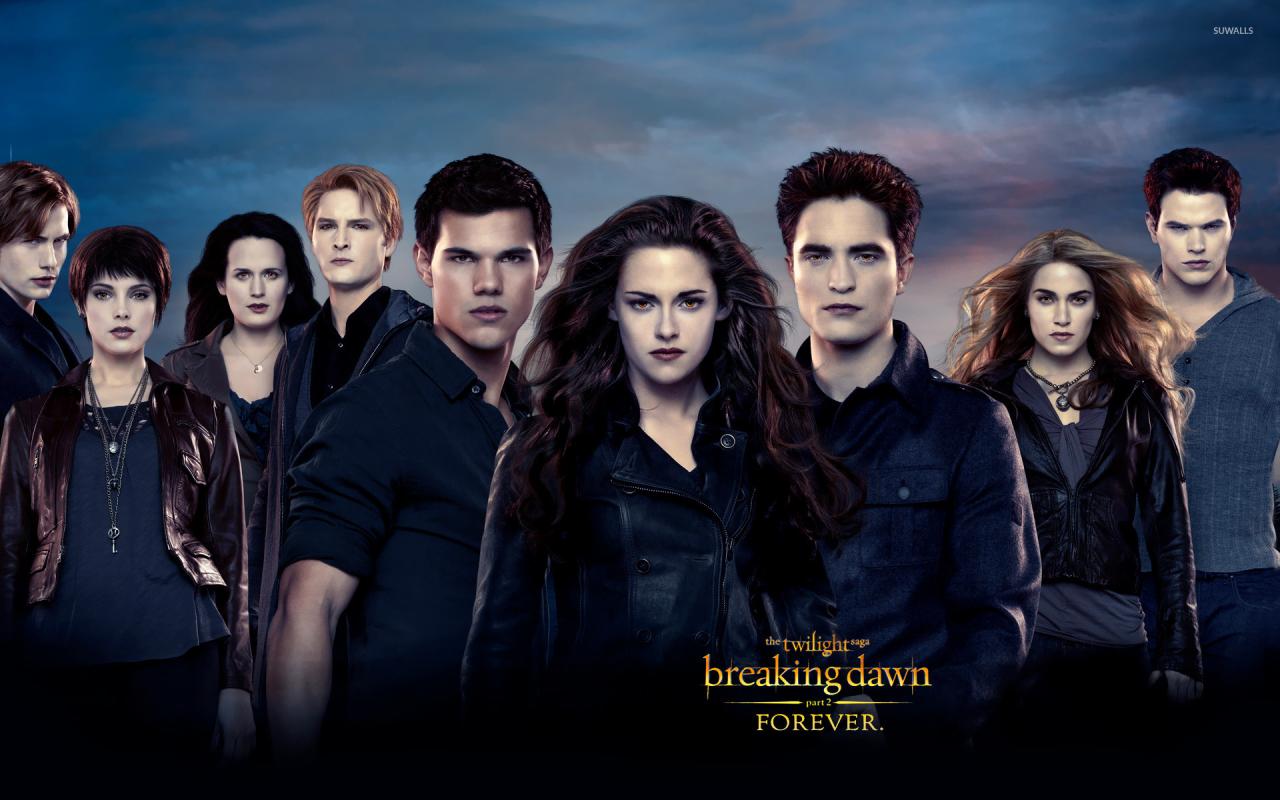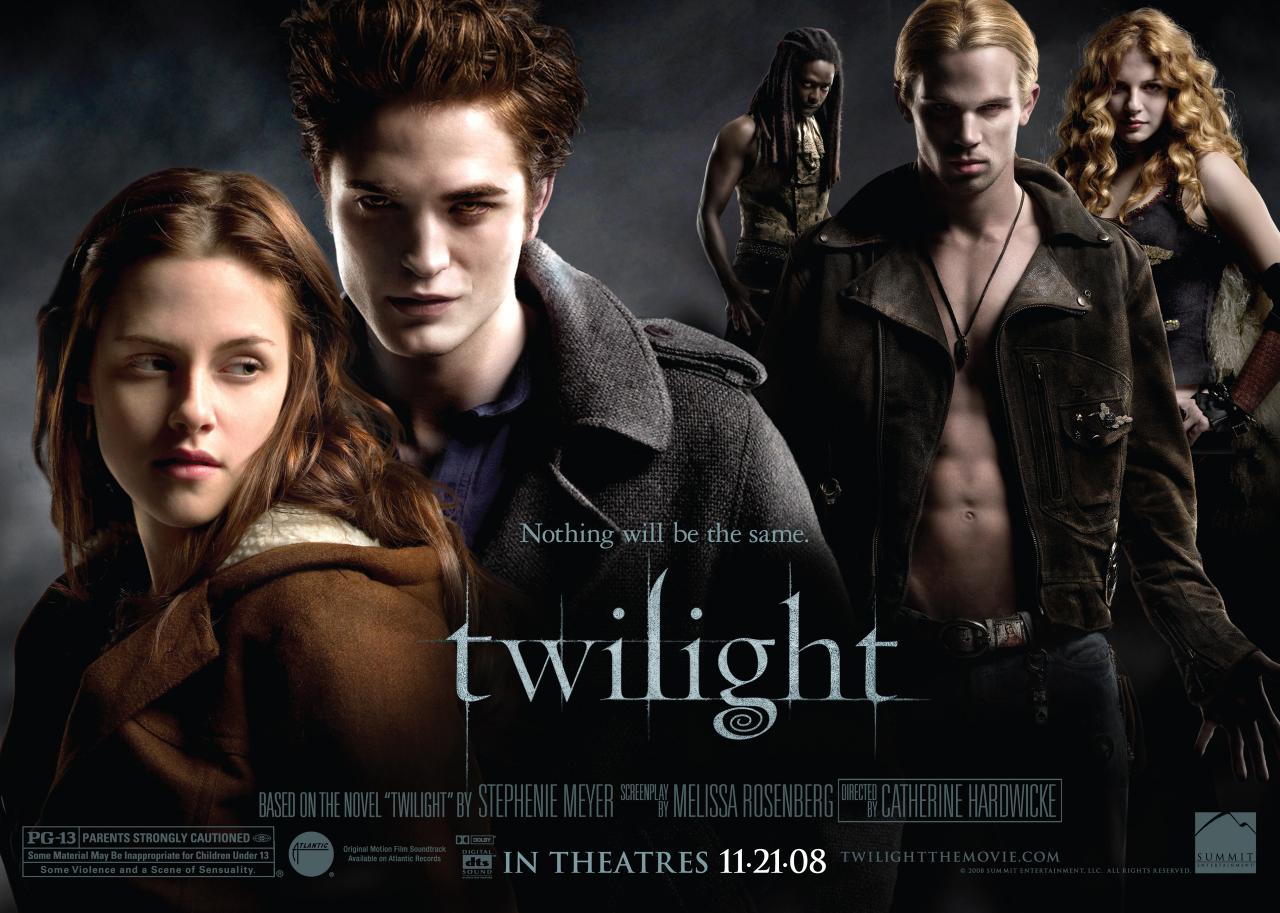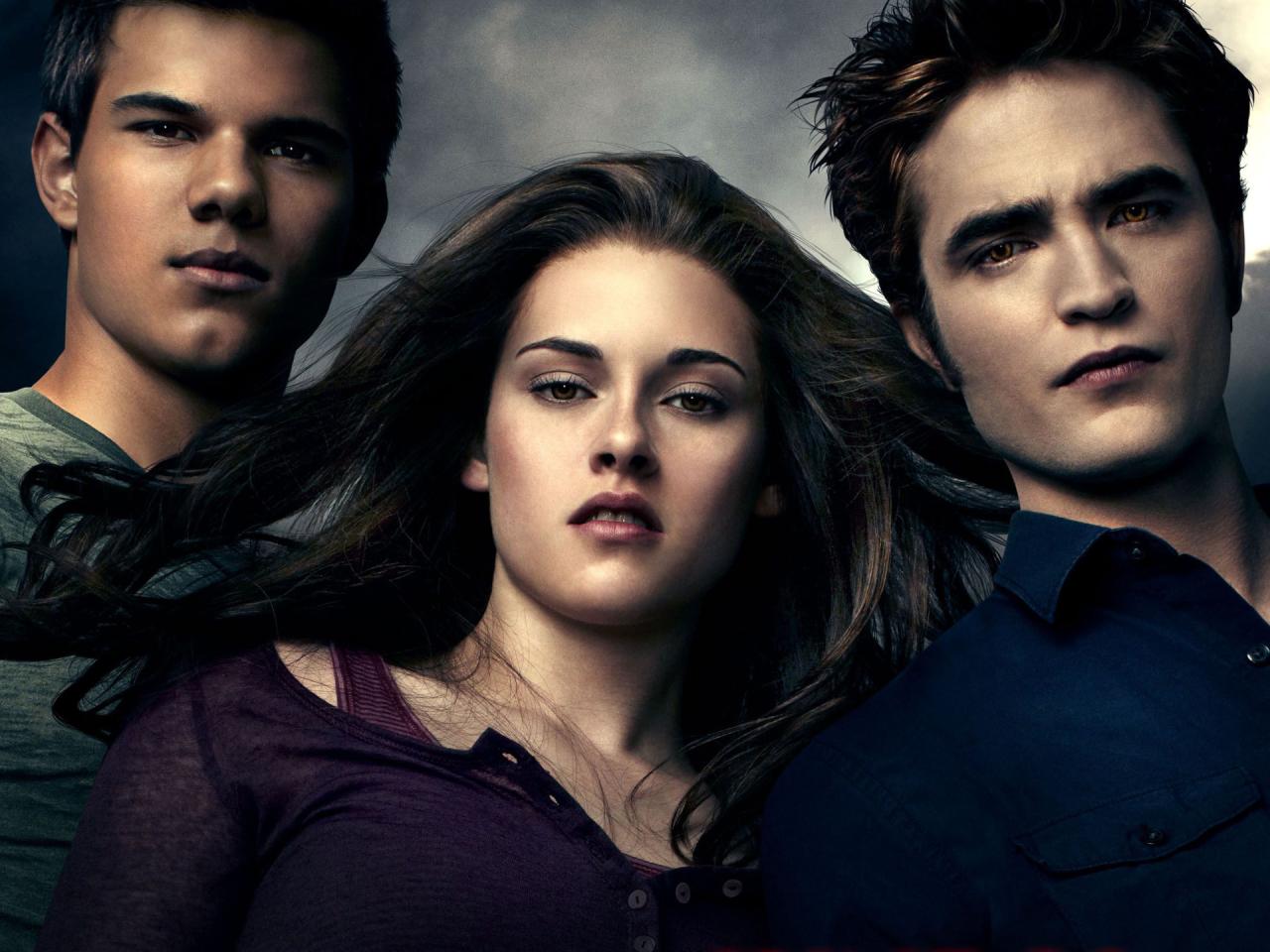The Twilight Saga, a global literary sensation, has captivated readers and audiences alike with its captivating tale of love, loyalty, and the supernatural. This enthralling series has left an indelible mark on popular culture, inspiring films, music, and a devoted fan base.
At its core, the Twilight Saga explores the complexities of human relationships, the allure of the forbidden, and the transformative power of love. Through its well-crafted characters, intricate plotlines, and evocative settings, the series invites readers on an unforgettable journey.
Literary Elements
The Twilight Saga falls under the genre of supernatural romance, a subgenre that combines elements of fantasy and romance. It features the supernatural world, particularly vampires and werewolves, with the romantic relationships between humans and these supernatural beings.
Narrative Structure and Plot Progression
The narrative follows a linear structure, with events unfolding in chronological order. The plot revolves around the forbidden romance between Bella Swan, a mortal human, and Edward Cullen, a vampire. The story explores the challenges and consequences of their relationship, including the supernatural dangers that surround them.
Main Characters and Relationships
The main characters in the Twilight Saga include:
- Bella Swan:A clumsy but strong-willed human girl who falls in love with Edward Cullen.
- Edward Cullen:A vampire who is attracted to Bella’s scent and falls deeply in love with her.
- Jacob Black:A werewolf who is initially Bella’s friend but later becomes romantically interested in her.
Themes and Motifs
The Twilight Saga explores profound themes of love, loyalty, and sacrifice, intertwined with the captivating motif of the supernatural. The saga delves into the complexities of human relationships and the transformative power of love, while also examining the roles of gender and power dynamics in a supernatural context.
Love, Loyalty, and Sacrifice
Love is a central force in the Twilight Saga, driving the actions and decisions of its characters. The intense love between Bella and Edward transcends the boundaries of life and death, showcasing the transformative power of love. Loyalty is another key theme, as the characters navigate complex relationships and make difficult choices to protect those they love.
Sacrifice becomes a defining act, as characters willingly put themselves in harm’s way for the sake of others.
The Supernatural
The supernatural motif permeates the Twilight Saga, creating a captivating and otherworldly atmosphere. Vampires, werewolves, and other supernatural creatures inhabit the world, adding an element of mystery and danger. The presence of the supernatural challenges the characters’ beliefs and forces them to confront the unknown, ultimately shaping their destinies.
Gender and Power Dynamics
Gender roles and power dynamics play a significant role in the Twilight Saga. The traditional gender roles are often challenged, with female characters exhibiting strength and independence. Bella, the protagonist, defies societal expectations by choosing to be with Edward, a vampire, despite the risks it entails.
The saga also explores the power dynamics between vampires and humans, highlighting the complexities of their interactions.
Cultural Impact
The Twilight Saga has become a global phenomenon, captivating millions of readers and viewers worldwide. Its impact on popular culture has been profound, influencing film, music, and fashion.
Impact on Film
The Twilight Saga film adaptations have been a major commercial success, grossing over $3.3 billion worldwide. The films have helped to revive the vampire genre and have inspired a number of other supernatural-themed films and television shows.
Impact on Music
The Twilight Saga has also had a significant impact on the music industry. The soundtrack to the first film, released in 2008, featured a mix of indie rock and pop songs that became instant hits. The soundtracks to subsequent films have also been successful, and the series has helped to launch the careers of several new artists.
Impact on Fashion
The Twilight Saga has also influenced fashion trends. The characters’ clothing, particularly Bella Swan’s, has become popular among fans. The series has also inspired a number of fashion lines and collaborations.
Fan Base and Engagement
The Twilight Saga has a devoted fan base that is highly engaged with the series. Fans have created a vast online community where they share their love for the books and films, and discuss the characters and storylines. The fan base has also been instrumental in promoting the series and its spin-offs.
Adaptations
The Twilight saga has been adapted into a series of five films, with the first film, Twilight, released in 2008. The films have been a commercial success, grossing over $3.3 billion worldwide. However, they have also been met with mixed critical reception.
There are a number of challenges involved in adapting a book series to film. One challenge is that the film must condense the story into a much shorter time frame. This can lead to the loss of some of the details and nuances of the book.
Another challenge is that the film must translate the characters and settings of the book into a visual medium. This can be difficult to do in a way that is both faithful to the book and visually appealing.
Despite the challenges, the Twilight films have been largely successful in adapting the story to film. The films have captured the essence of the books, and they have created a visually stunning world that is both faithful to the books and visually appealing.
Impact of the Adaptations
The Twilight films have had a significant impact on the overall reception of the series. The films have introduced the series to a wider audience, and they have helped to make the books more popular. The films have also helped to create a more positive perception of the series.
Before the films were released, the books were often dismissed as being “chick lit.” However, the films have helped to show that the books are actually complex and well-written.
The Twilight films have also had a positive impact on the careers of the actors who starred in them. Kristen Stewart, Robert Pattinson, and Taylor Lautner have all become major stars since the films were released.
Literary Devices
The Twilight Saga employs a range of literary devices to enhance its narrative and create a compelling story. These devices include foreshadowing, symbolism, and imagery, each contributing to the development of characters, the exploration of themes, and the creation of a captivating atmosphere.
Foreshadowing
Foreshadowing is used throughout the series to hint at future events and create a sense of suspense. For instance, in Twilight, Bella’s frequent dreams of a mysterious, handsome stranger foreshadow her encounter with Edward Cullen. Similarly, in New Moon, the introduction of the Volturi, a powerful vampire coven, foreshadows the danger that awaits Bella and Edward.
Symbolism, The twilight saga
Symbolism is another prevalent literary device in the series. The wolves that surround Bella’s house in Twilightsymbolize both danger and protection, reflecting the complex relationship between Bella and the Cullen family. The apple, a recurring symbol in the series, represents temptation and forbidden knowledge, highlighting the dangers of Bella’s relationship with Edward.
Imagery
Imagery is used extensively to create vivid and evocative descriptions of the characters and their surroundings. The descriptions of the Quileute tribe’s reservation in New Moon, with its lush forests and misty beaches, create a sense of isolation and mystery. The depiction of Edward’s pale skin, crimson eyes, and piercing gaze in Twilightadds to his otherworldly and alluring nature.
Characterization: The Twilight Saga
The Twilight Saga features a diverse cast of characters, each with their own unique motivations, conflicts, and growth. Bella Swan, the protagonist of the series, is a complex and relatable character who undergoes significant transformation throughout the story.
Bella Swan
Bella Swan is a 17-year-old girl who moves from sunny Phoenix, Arizona, to the perpetually overcast town of Forks, Washington, to live with her father, Charlie, after her mother, Renée, remarries. Bella is an introverted and bookish girl who struggles to fit in at her new school.
She is often clumsy and awkward, but she is also intelligent and compassionate.
Motivations
- Bella is motivated by her desire to find love and acceptance.
- She is also motivated by her need to protect those she loves, even if it means putting herself in danger.
Conflicts
- Bella faces a number of conflicts throughout the series, including her struggle to accept her own identity as a vampire.
- She also struggles with her feelings for Edward Cullen, a vampire who is both dangerous and alluring.
Growth
- Bella undergoes significant growth throughout the series.
- She learns to accept herself for who she is, and she becomes more confident and assertive.
- She also learns to love and trust others, even if they are different from her.
Comparison to Other Characters
- Bella is often compared to other female characters in the series, such as Alice Cullen and Rosalie Hale.
- Alice is a cheerful and optimistic vampire who is always looking for the best in people.
- Rosalie is a beautiful and aloof vampire who is haunted by her past.
- Bella is different from both of these characters in that she is more introverted and insecure.
- However, she is also more compassionate and understanding than either of them.
Visual Representation
The Twilightsaga’s visual representation encompasses both the physical descriptions of its characters and the settings where the story unfolds. These elements contribute to the immersive experience of the series, bringing the characters and their world to life in the minds of readers and viewers.
Physical Descriptions
The physical appearances of Edward Cullen and Jacob Black are central to their characterizations and play a significant role in the narrative. The following table compares their descriptions in the books and films:
| Characteristic | Edward Cullen (Books) | Edward Cullen (Films) | Jacob Black (Books) | Jacob Black (Films) |
|---|---|---|---|---|
| Height | 6’2″ | 6’1″ | 6’7″ | 6’2″ |
| Hair Color | Bronze | Copper | Black | Black |
| Eye Color | Golden | Gold | Black | Black |
| Skin Tone | Pale | Pale | Tanned | Tanned |
| Build | Slender | Slender | Muscular | Muscular |
Key Settings
The settings of the Twilightseries are as crucial as the characters themselves, providing a backdrop for their interactions and shaping the overall atmosphere of the story. Key locations include:
- Forks, Washington: A small, overcast town where Bella Swan lives with her father. The town’s gloomy weather and isolated location mirror Bella’s feelings of loneliness and alienation.
- La Push Beach: A Native American reservation where Jacob Black and his family reside. The beach’s natural beauty and the close-knit community contrast with the supernatural world of vampires.
Fan Theories
The Twilight Saga has sparked numerous fan theories that have captivated the fandom. These theories delve into the characters’ motivations, the series’ mythology, and the possible outcomes of the story.
Theories on Bella’s Transformation
One popular theory suggests that Bella’s transformation into a vampire was not a straightforward process. Some fans believe that Bella’s initial transformation was incomplete, leaving her with a unique combination of vampire and human traits. This theory aligns with the inconsistencies in Bella’s powers and her ability to retain her human emotions after becoming a vampire.
Theories on the Volturi
Another popular theory focuses on the Volturi, the ruling vampire coven. Some fans speculate that the Volturi’s true agenda is not to maintain peace among vampires but to control the vampire population and prevent the exposure of vampires to humans.
This theory suggests that the Volturi’s actions are driven by fear and a desire for absolute power.
Theories on the Prophecy
The prophecy that surrounds the Cullen family and the Quileute tribe has also sparked fan theories. Some fans believe that the prophecy is not as straightforward as it seems and that there are multiple possible interpretations. They speculate that the prophecy may not refer to a literal battle but to a metaphorical conflict between the forces of good and evil.
Plausibility and Fandom Engagement
While some fan theories are more plausible than others, they all contribute to the fandom’s engagement with the series. They allow fans to explore the characters and the story in new and imaginative ways, fostering a sense of community and shared speculation.
Fan theories also demonstrate the depth and complexity of the Twilight Saga, inspiring fans to delve deeper into its themes and characters.
Personal Insights
Personally, I find the fan theories surrounding the Twilight Saga intriguing and thought-provoking. They provide a unique perspective on the series and encourage readers to question the assumptions and interpretations they may have initially held. While not all fan theories are equally plausible, they all add to the richness and depth of the Twilight fandom.
Epilogue
The Twilight Saga stands as a testament to the enduring power of storytelling. Its themes of love, sacrifice, and the battle between good and evil continue to resonate with readers worldwide. Whether through its books, films, or fan engagement, the series has left a lasting legacy that will continue to inspire and captivate generations to come.
FAQ Overview
What is the main conflict in the Twilight Saga?
The central conflict revolves around Bella Swan’s forbidden love for the vampire Edward Cullen and her torn feelings for the werewolf Jacob Black, creating a love triangle that tests her loyalty and forces her to choose between two worlds.
Who is the author of the Twilight Saga?
The Twilight Saga was written by American author Stephenie Meyer.
What is the significance of the setting in the Twilight Saga?
The series is set in the small town of Forks, Washington, which provides a stark contrast between the ordinary human world and the supernatural realm inhabited by vampires and werewolves.
What are some of the popular fan theories surrounding the Twilight Saga?
Fans have developed numerous theories, including the possibility of Edward being a hybrid of vampire and werewolf, the existence of other supernatural creatures in the series, and the ultimate fate of Bella and Edward’s relationship.



